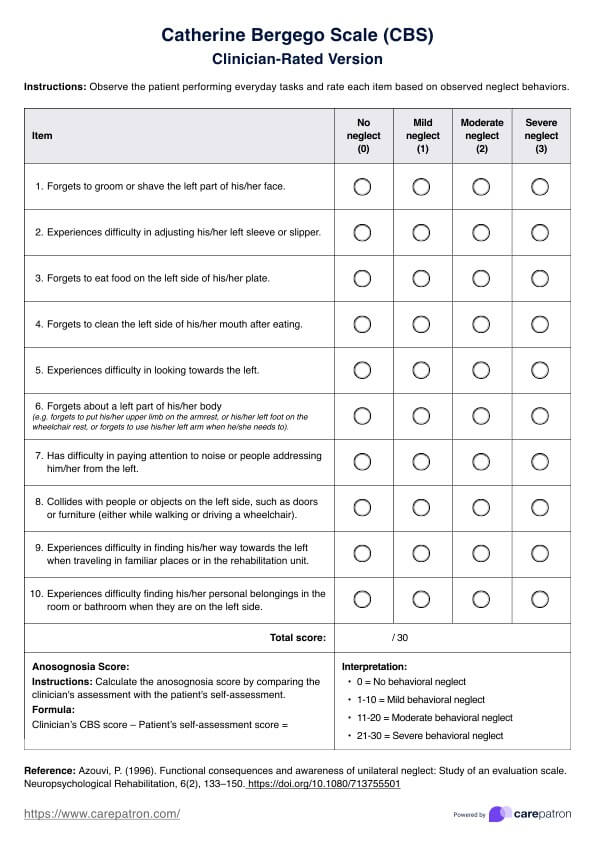The CBS is designed to detect the presence and degree of unilateral neglect in patients by observing their performance in everyday tasks. It also measures the patient's self-awareness of their neglect.

Catherine Bergego Scale (CBS)
Learn the symptoms, causes, scoring, and benefits of the Catherine Bergego Scale (CBS) using our professional template to assess unilateral neglect.
Use Template
Catherine Bergego Scale (CBS) Template
Commonly asked questions
The CBS is administered by a clinician who observes the patient performing specific tasks. The clinician rates the patient's performance from 0 to 3. There is also a self-reported version where the patient assesses their difficulties.
A high CBS score indicates more severe unilateral neglect. The total score can range from 0 to 30, with higher scores reflecting greater impairment.
EHR and practice management software
Get started for free
*No credit card required
Free
$0/usd
Unlimited clients
Telehealth
1GB of storage
Client portal text
Automated billing and online payments











